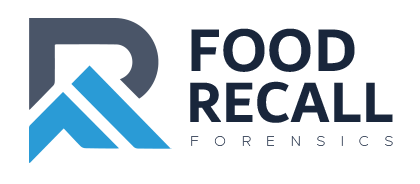When the phone rings and the words “potential recall” are spoken, everything changes. In an instant, operations teams, executives, regulators, and retailers are thrust into a high-stakes scramble that will shape consumer trust, brand reputation, and the financial future of the company.
Those first 48 hours of a recall are not just critical—they are defining. As I put it in my book In the Midst of a Recall, “Decisions made in the first two days set the tone for everything that follows. Control the chaos early, and you will control the outcome. Let the chaos control you, and you will spend months in reactive survival mode.”
This article takes you through the timeline—hour by hour, step by step—of what really happens in the crucial opening window of a recall. We’ll cover containment, FDA notification, retailer coordination, and consumer communications, along with leadership insights drawn directly from Manning’s playbook.
Hour 0–4: Containment and Verification
The very first action in any recall scenario is containment. Once a potential issue has been identified—whether from consumer complaints, lab results, or regulatory contact—the clock starts.
Key Actions
- Stop distribution immediately. No additional product should leave the facility. Shipping holds should be placed on all affected SKUs.
- Isolate product on site. Warehouse teams should move suspect lots to a physically distinct hold area.
- Notify distribution centers. Begin identifying what has already shipped and where it went.
Containment, however, is not just about locking down product. It’s about verifying the problem. Was the lab test accurate? Is the consumer complaint credible? Could this be a single-batch issue or a systemic failure?
As I stress in my book, “Do not confuse speed with recklessness. Contain quickly, but confirm carefully. Nothing is worse than recalling the wrong product—or waiting too long to recall the right one.”
Hour 4–12: Leadership Alignment and FDA Notification
Once containment is underway, leadership must align. This means pulling together the recall management team—typically operations, quality assurance, legal, regulatory affairs, and communications.
Leadership Meeting Agenda
- Define the scope of the issue (lot codes, production dates, SKUs).
- Review health risk: Class I (serious), Class II (moderate), or Class III (minor).
- Assign roles: who is interfacing with FDA, who is coordinating retailers, who is managing consumer lines.
If the situation involves a product already in commerce and poses a potential health risk, FDA must be notified quickly. The agency expects early communication, even if details are still developing.
As I state in my book, “Honesty with regulators in the early hours builds credibility. They know recalls are messy. What they need is a company that communicates early, takes responsibility, and shares information as it becomes available.”
Hour 12–24: Retailer Coordination
By the 12-hour mark, the focus shifts from internal control to external coordination. Retailers are not just customers—they are partners in crisis management. Their shelves, warehouses, and digital ordering systems are the front line for consumer exposure.
Critical Steps
- Issue stop-sale notices. Retailers must pull affected products from shelves immediately.
- Provide clear lot code guidance. Confusion at retail level leads to incomplete recalls.
- Coordinate with major accounts. Big-box chains, e-commerce platforms, and foodservice distributors each require tailored communication.
This is also the time to document every step. Create a central log of communications—who was contacted, when, and what actions were confirmed. This log becomes invaluable when proving due diligence to FDA or defending against liability claims.
In the Midst of a Recall: “Retailers will remember two things: how fast you acted and how clear your instructions were. Sloppy communication multiplies the damage.”
Hour 24–36: Consumer Communications
Once regulators and retailers are informed and product is being pulled, the next frontier is consumer communication. This is often the most visible and reputation-defining stage of the first 48 hours.
Methods of Notification
- Press releases. These must be factual, concise, and approved by FDA before distribution.
- Company website and social media. A recall landing page, FAQ, and pinned posts help direct traffic.
- Customer hotlines. Call centers must be trained and staffed to handle inquiries.
The goal here is balance. Consumers must be warned clearly about risks, but without unnecessary alarm. Provide instructions on how to identify affected product, what to do if it’s found, and how to seek reimbursement.
In my book, I emphasize: “Consumers forgive problems they believe are handled with integrity. They do not forgive being left in the dark.”
Hour 36–48: Stabilization and Next Steps
By the second day, the initial surge of activity should give way to a more stable rhythm. Product is contained, regulators are engaged, retailers are cooperating, and consumers are being notified.
Now the focus shifts to analysis and planning:
- Root Cause Investigation. Begin tracing the failure—whether it was allergen mislabeling, bacterial contamination, or a foreign object.
- Expand the scope if necessary. If investigation shows broader impact, update FDA and retailers immediately.
- Plan for effectiveness checks. FDA requires proof that the recall has actually worked (e.g., verification calls, site visits).
- Prepare leadership briefings. Executives, boards, and stakeholders need status updates.
This is also the moment when leadership tone truly matters. To quote my book, “In the first 48 hours, everyone looks to leadership not for perfection, but for direction. Calm presence, clear decisions, and visible accountability make the difference between a recall that becomes a case study in control—or a case study in collapse.”
Common Pitfalls in the First 48 Hours
Even seasoned companies can stumble. The most frequent mistakes include:
- Delaying FDA notification out of fear or uncertainty.
- Inconsistent retailer instructions that lead to partial product pulls.
- Overpromising fixes that cannot realistically be delivered.
- Poor documentation of actions taken, weakening the defense in litigation.
- Neglecting internal communication, leaving employees confused and spreading rumors.
As Manning cautions, “The cracks that appear in the first 48 hours are usually cracks that already existed in the system. A recall doesn’t create new weaknesses—it exposes the ones you ignored.”
Leadership Lessons from the First 48 Hours
Every recall teaches the same leadership lesson: prevention is cheaper than reaction. But once a recall begins, strong leadership can still turn a potential disaster into a controlled response.
Key takeaways for leaders:
- Be visible. Staff and stakeholders need to see calm, decisive leadership.
- Empower your team. Trust subject-matter experts to execute their roles without micromanagement.
- Document relentlessly. What you record in the first 48 hours will protect you in the next 48 weeks.
- Own the narrative. Speak early, speak clearly, and speak with integrity.
Or as my book sums it up: “A recall handled well can demonstrate to the world that your company values people above profit. A recall handled poorly proves the opposite.”
Conclusion: Preparing for the Storm Before It Comes
No company ever plans to face a recall, but every company should plan for the first 48 hours of one. Containment, FDA notification, retailer coordination, and consumer communication form the four pillars of immediate response.
The difference between success and failure lies in preparation, culture, and leadership. Systems must be tested, roles assigned, and mock recalls practiced long before the real call comes.
Because when it does, you won’t have time to figure it out—you’ll only have time to execute.
And as In the Midst of a Recall reminds us, the companies that survive are those that treat the first 48 hours not as chaos, but as the ultimate test of discipline, systems, and leadership.



